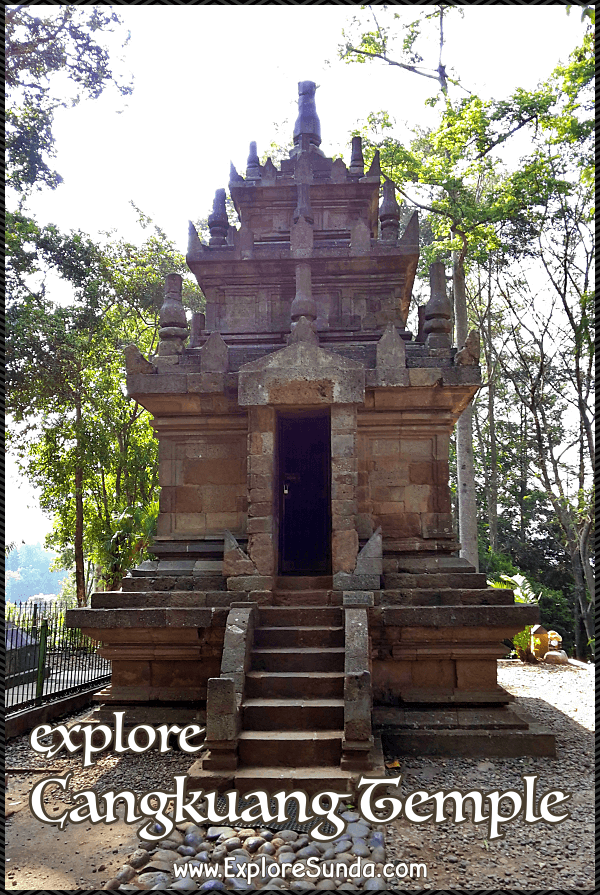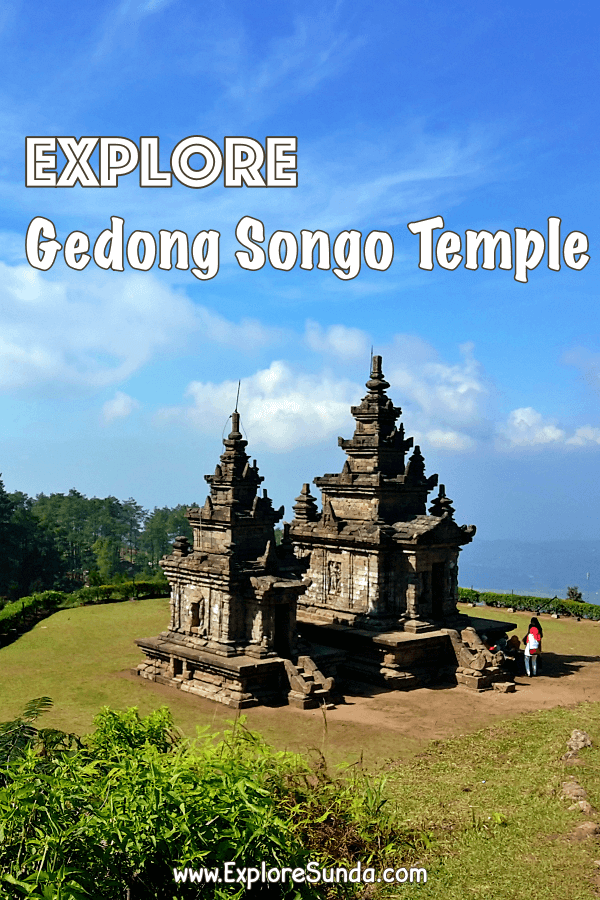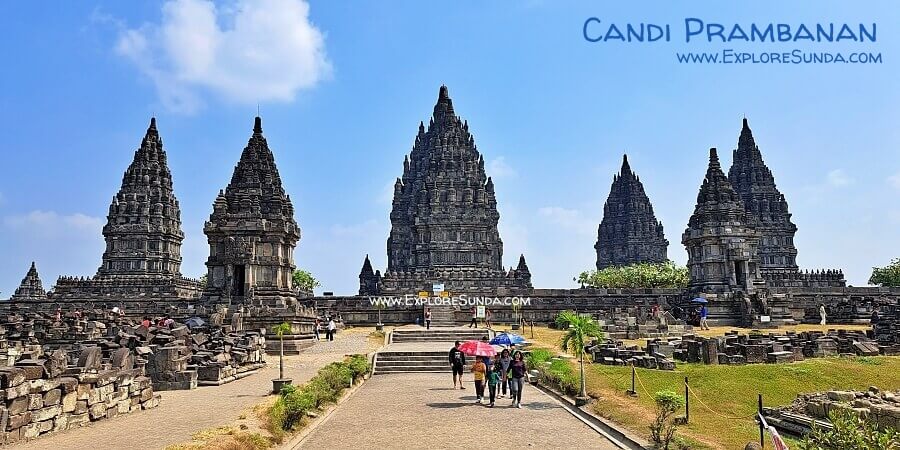Candi Cangkuang
The Ancient Temple on The Lake
Cangkuang is located in Leles, Garut. The GPS coordinates are -7.102879, 107.918863. The small road to this area is on the left side of the provincial road from Bandung to Garut.
The main point of interest here is a Hindu temple located in a small island in the corner of a lake called Situ Cangkuang (situ means lake). Thus, activities to enjoy here are:
- Enjoy the ride on a bamboo raft
- Visit Kampung Pulo
- Explore Candi Cangkuang and its museum.
Enjoy the ride on a bamboo raft (getek)
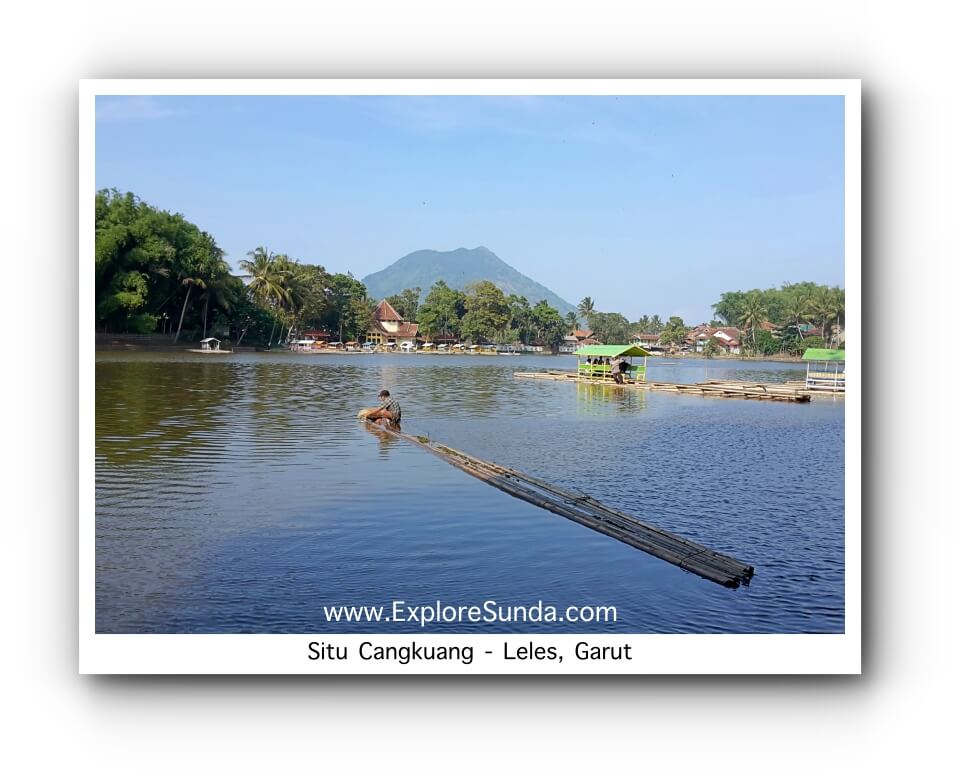
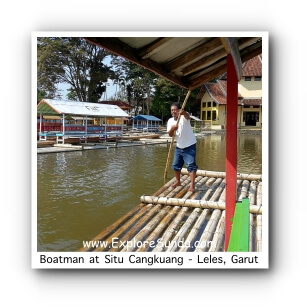
The bamboo raft or getek is a big raft where up to 20 people can travel together. The ticket price is not expensive at all, Rp. 4,000 for a round trip. Alternatively, you can rent the whole getek for Rp. 80,000 to circle the lake. The rental price is not fixed though, you still can negotiate it with the boatman.
Although getek is only made from bamboo tied together, it is stable and sturdy, where people can walk on it comfortably, even my daughter jumped on it. The small tricky part is only in getting on and off it to the pier.
Getek doesn't use any motor. The boatman stab a bamboo pole to the bottom of the lake and then use it as a lever to push getek. He repeatedly does it to drive the raft by pushing it at the right angles, either at the front, left or right sides. What an eco friendly transportation! :)
The lake itself is rich with fishes, such as carper and mujair (Mozambique tilapia), as well as a fresh water clam called kijing (Pilsbryoconcha exilis). You will see the fishermen in smaller getek. They bring net to catch the fish or you can see their heads while they walk to feel any kijing on the bottom of the lake. Anyway, the lake is not too deep, it's approximately 1.5m.
Sometimes you could view lotus bloom at the corners of the lake. It seems that time slows down while you enjoy the peaceful view and the cool soft breeze in Situ Cangkuang.
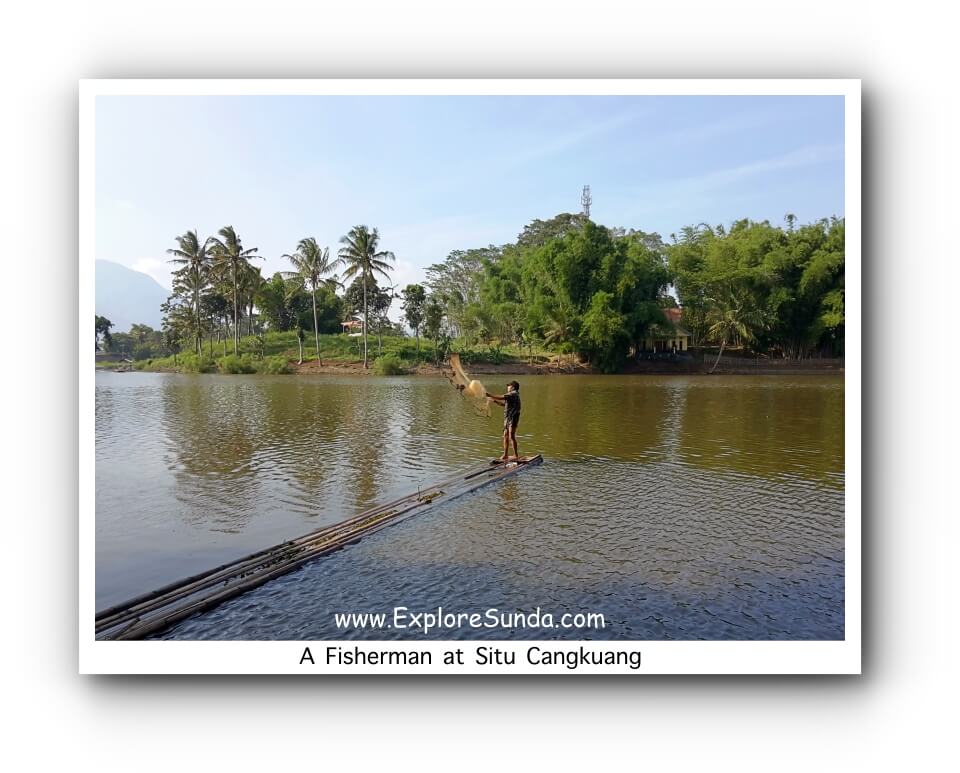
Visit Kampung Pulo
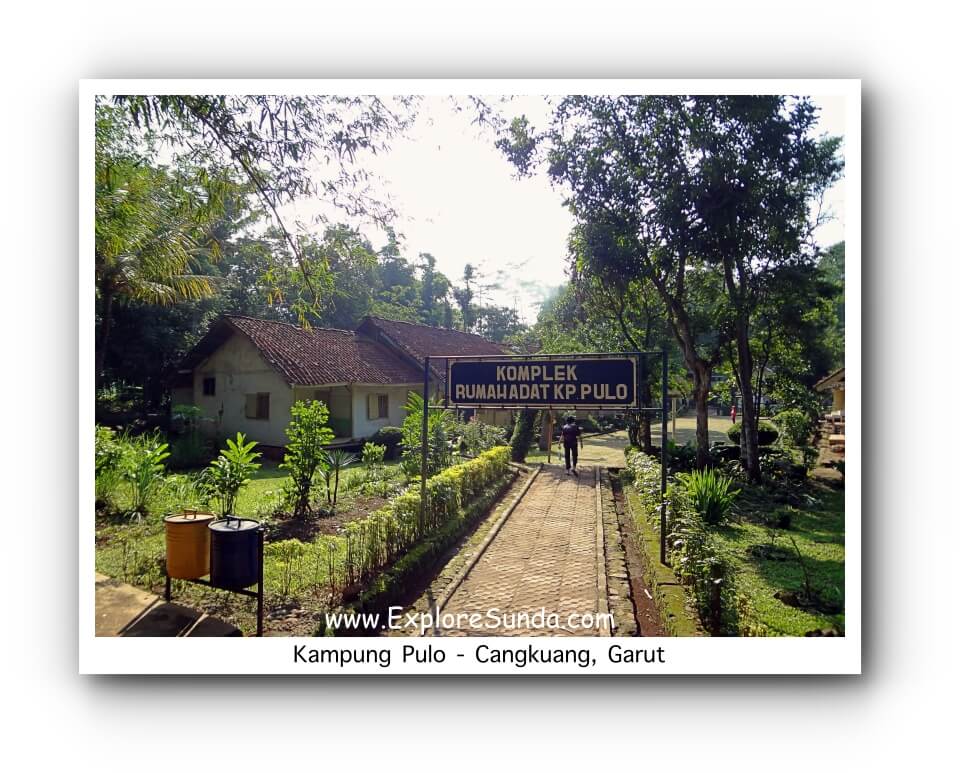
Once you reach the island, you will walk through souvenir and snack kiosks. Then you will enter Kampung Pulo.
Kampung Pulo is a very traditional village. There are only 6 houses there for 6 families. When the number of families living there have grown, some of them have to move out of the village.
From time to time Kampung Pulo held cultural presentations, such as demonstrating how they process the bark of trees to create paper and how to concoct the ink.
Explore Candi Cangkuang and Its Museum
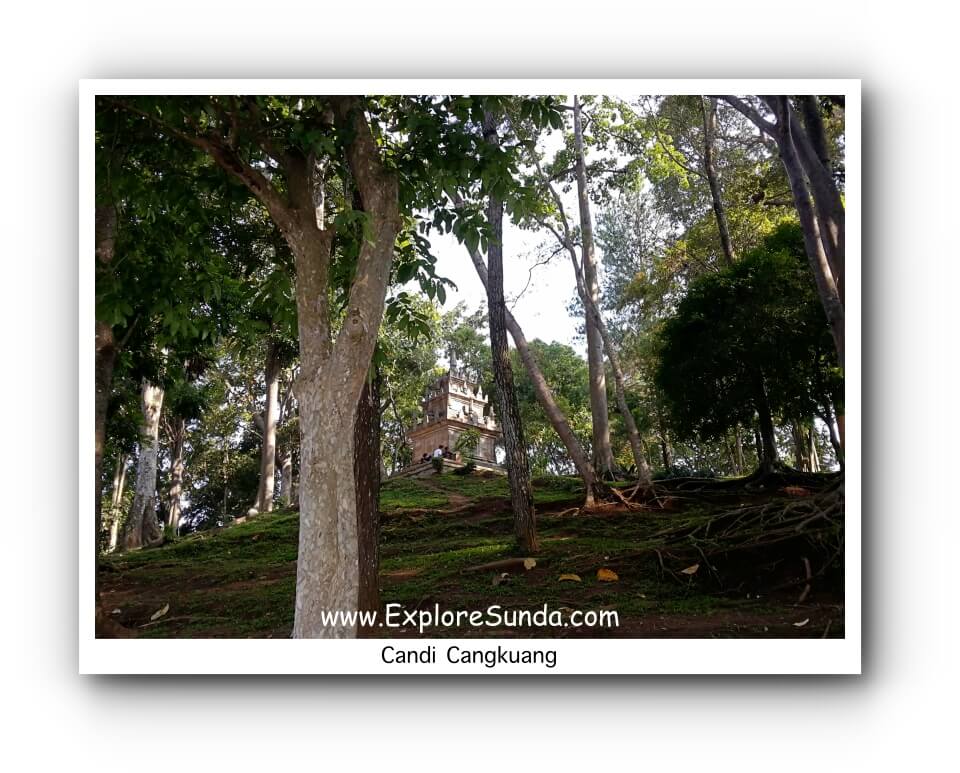
Candi Cangkuang (candi is Bahasa Indonesia for temple) is nestled under big shady trees on top of a small hill. The temple got its name from the many cangkuang trees that grow nearby. Cangkuang tree is a kind of pandanus plant.
The temple is the only completely restored temple in Sunda. Archaeologists predicted it was built in eighth century. Candi Cangkuang was a ruin with most of its andesite stones scattered all over the ground when it was found in 1966. The statue of Shiva and Nandi (Shiva’s vehicle in the form of a bull) found there marked it as a Hindu temple. The restoration was completed in 1976.
Next to the temple is an ancient tomb of Embah Dalem Arif Muhammad. He was believed as the ancestor of people in Kampung Pulo.
There is a small house right in front of the temple. Originally, it was used to store important artifacts during the restoration. Once the restoration was completed, it functioned as a museum.
The museum has documentations starting from the finding of the temple, during restoration, until it was completely restored.
The special collection of this museum is the old trancripts witten in
arabic. The transcript was locally made by the residence in Kampung
Pulo. It was made from the stem of Saeh trees (Broussanetia Papyrifera
Vent). The stem was pressed until it was thin and then dried under the
sun. The process is called Daluang. Next, they made ink called Mangsi
Hideung. It was made by mixing ash and sticky rice until it burnt. Hence, no wonder the color of the ink is black only. :)
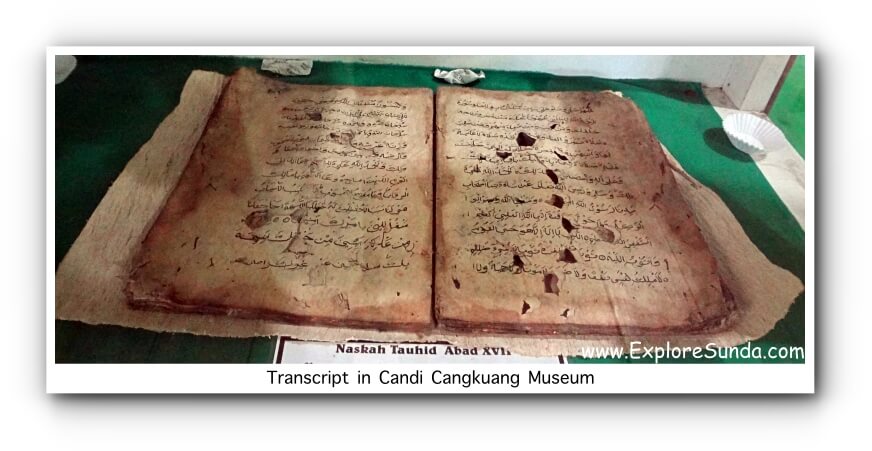
Having a vacation in a highland is always fun. The mountain view and fresh air are always relaxing. Do you know that the land of Sunda has many interesting places to visit in the highlands? Let's start with Puncak Pass, Lembang and Ciwidey.
Recent Articles
-
Roro Jonggrang: A Tale Etched in the Stones of Prambanan Temple
Nov 05, 25 11:52 PM
Unravel the ancient Javanese legend of Roro Jonggrang that bridges myth, devotion, and the grandeur of Prambanan. -
Discover the Vibrant Celebration of Imlek in Indonesia!
Jan 13, 25 03:24 AM
The Chinese New Year of 2576 will be celebrated on January 29, 2025. Discover the special things in this Imlek festival! -
The Site Map of ExploreSunda.com
Nov 26, 24 10:40 PM
A thorough site map to help you browse through the Explore Sunda site.
